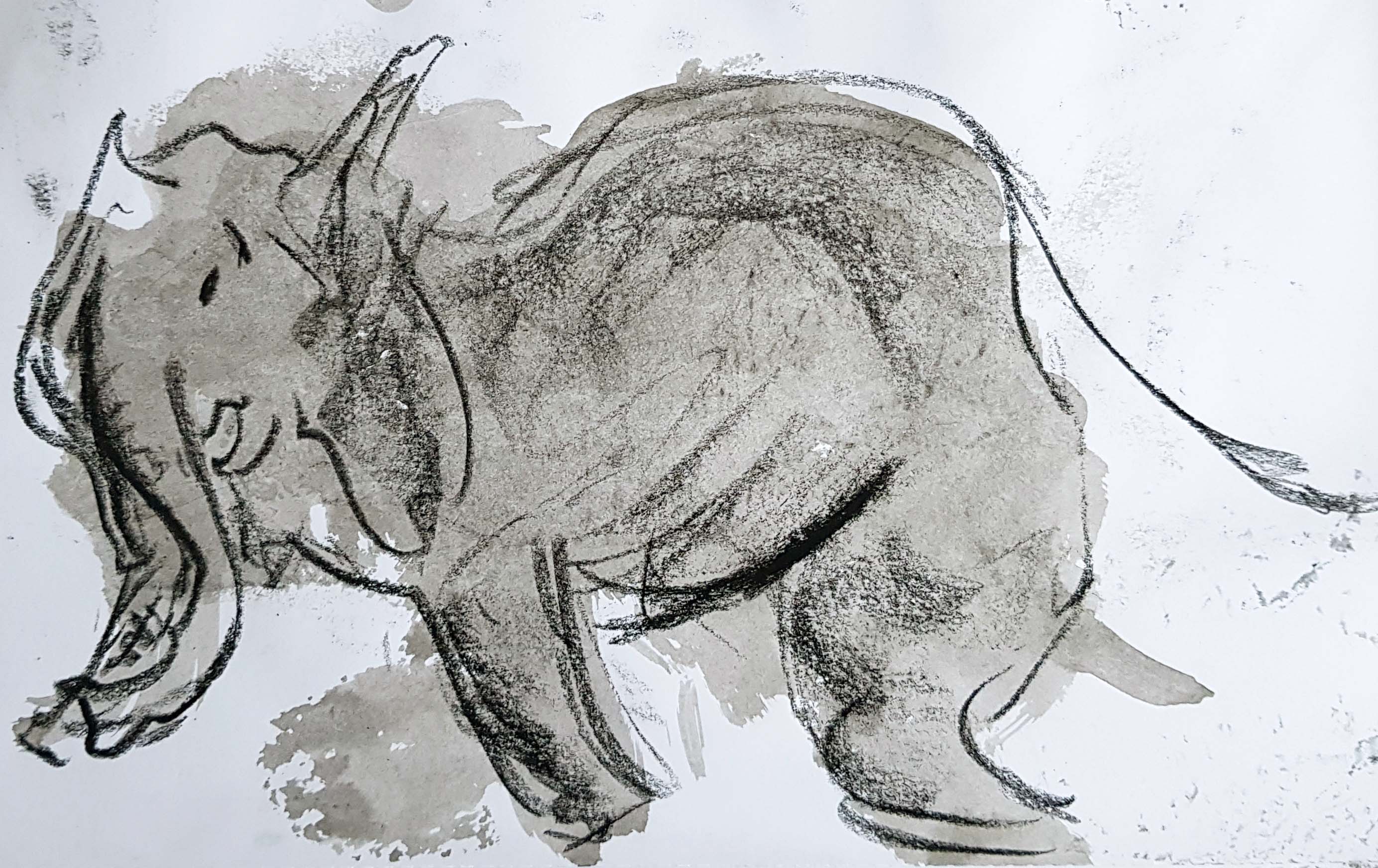Focussing on essence
In this blog I would like to show you some results of another assignment for my master illustration, ‘practice 1’. The assignment is closely related to the blogs I am writing, because I am making a series of drawings starting from the keyword ‘essence’. The most inspiring and concise definition I found of the word ‘essence’ was: ‘a thing in its purest and most concentrated form’. This seemed to me a worthy quest, to try and draw a thing in its purest form. I started out (and ended) with elephants, because I am writing a picture book for which I am developing an elephant character. But I also experimented with the essence of objects, people, situations and materials.
The most helpful thing I found was, that when I focus on the essence of a thing, take away my assumptions about it, and draw with courage (not worrying about the outcome too much), then my illustrations really improve. I often get afraid and stuck when I am drawing, thinking I can’t do it. For instance, when I was trying out this elephant character:

I was totally frozen in my fear of failure, drawing little forced sketches and thinking I would never be able to come up with something original. Then I focussed on the character, who is unworried and heavy and relaxed and started drawing big, with chalk, trying to just go with this essence in mind.
A lot of illustrators (and artists in general) mention this kind of fear. John Burningham, the great children’s illustrator, tells us in ’the Magic Pencil’:
‘It’s a bit of a tightrope sometimes. With each new book I’ll be thinking, can I do it again? Can I pull it off again? There are moments when I feel I’ve lost it, and that I have no ability’. (Burningham cited in the Magic Pencil, 2002)
I think this fear has to do, not only with the personal fear that you are not good enough, but also with the awareness that the creative process is for a great part irrational. The fear is just an indicator that there is a large element of surprise and coincidence that you have no control over; maybe you could even call this a cooperation with the unknown. And the rational part of the human brain always squirms over losing control. Connecting to the essence of a thing also means that you have to connect to your own essence, and this helps to stay present in spite of the fear.

The essence of graphite, chalk, charcoal and glasses
It can also be useful to discover the essence of a situation or feeling. I was on a holiday in Greece, trying to capture the feeling of a girl on a swing, starting with a copy of a drawing by Lotte Klaver which I really like. I was doing sketches and could not quite get it right. Then I got ill, coming down with a fever, lying in bed with images of girls on swings flying through my head. When suddenly I ‘saw’ an image of a girl, looking down upon her through the foliage, thinking the words ‘dappled sunlight’ and understanding that the essence I wanted to capture had something to do with the experience of becoming one with your surroundings. When you know the essence of your drawing, connect to it and then follow your hand, the results are often surprising.

Hopefully I won’t always need a fever, but it did help to quiet down my rational thoughts and listen to what I intuitively knew. It does take ‘rational’ studying of course, before you get there. To come back to John Burningham in ’the Magic Pencil’:
‘I try to draw as little as possible, keep it down to a bare minimum, just what’s necessary; but I do masses of preparatory drawing. You have to. Drawing is like playing the piano’ (Burningham cited in the Magic Pencil, 2002)
Many illustrators talk about this need to practice and study up to the point where it suddenly starts to flow. For me it did in the end, drawing my final elephants for practice 1:
Blake, Q., Carey, J. (2002) The Magic Pencil. London: the British Library
(2012) ‘Greatest Evolvability: A Place of Chaos, White Rabbits, Fear, Receptivity and Invention’, New Writing, Vol. 9, No. 2, p. 237-244











